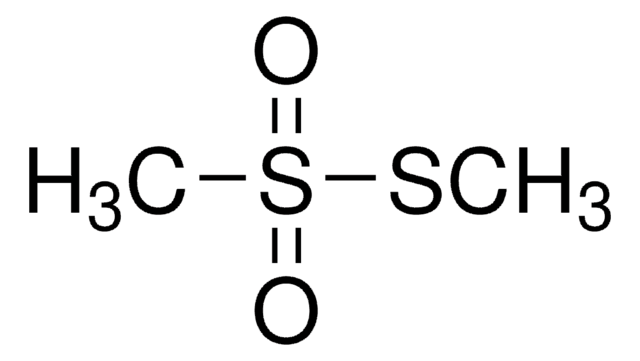A1935
Photobiotin acetate salt
For labeling DNA probes for hybridizations
Sinónimos:
Biotin {3-[3-(4-azido-2-nitroanilino)-N-methylpropylamino]propylamide} acetate salt, N-(4-Azido-2-nitrophenyl)-N′-(3-biotinylaminopropyl)-N′-methyl-1,3-propanediamine acetate salt
Seleccione un Tamaño
MXP 14,162.00
Fecha estimada de envío18 de mayo de 2025
Seleccione un Tamaño
About This Item
MXP 14,162.00
Fecha estimada de envío18 de mayo de 2025
Productos recomendados
grado
for molecular biology
Nivel de calidad
Ensayo
≥95%
Formulario
film or powder
solubilidad
H2O: 10 mg/mL (Stable for at least 5 months if kept frozen and protected from light.)
temp. de almacenamiento
−20°C
cadena SMILES
CC(O)=O.CN(CCCNC(=O)CCCC[C@@H]1SCC2NC(=O)NC12)CCCNc3ccc(cc3[N+]([O-])=O)N=[N+]=[N-]
InChI
1S/C23H35N9O4S.C2H4O2/c1-31(12-4-10-25-17-9-8-16(29-30-24)14-19(17)32(35)36)13-5-11-26-21(33)7-3-2-6-20-22-18(15-37-20)27-23(34)28-22;1-2(3)4/h8-9,14,18,20,22,25H,2-7,10-13,15H2,1H3,(H,26,33)(H2,27,28,34);1H3,(H,3,4)/t18-,20-,22-;/m0./s1
Clave InChI
FFBLNTOMOSLSQM-AYEYRVMASA-N
¿Está buscando productos similares? Visita Guía de comparación de productos
Descripción general
Aplicación
Acciones bioquímicas o fisiológicas
Precaución
Producto relacionado
Código de clase de almacenamiento
11 - Combustible Solids
Clase de riesgo para el agua (WGK)
WGK 3
Punto de inflamabilidad (°F)
Not applicable
Punto de inflamabilidad (°C)
Not applicable
Equipo de protección personal
Eyeshields, Gloves, type N95 (US)
Elija entre una de las versiones más recientes:
Certificados de análisis (COA)
¿No ve la versión correcta?
Si necesita una versión concreta, puede buscar un certificado específico por el número de lote.
¿Ya tiene este producto?
Encuentre la documentación para los productos que ha comprado recientemente en la Biblioteca de documentos.
Active Filters
Nuestro equipo de científicos tiene experiencia en todas las áreas de investigación: Ciencias de la vida, Ciencia de los materiales, Síntesis química, Cromatografía, Analítica y muchas otras.
Póngase en contacto con el Servicio técnico







